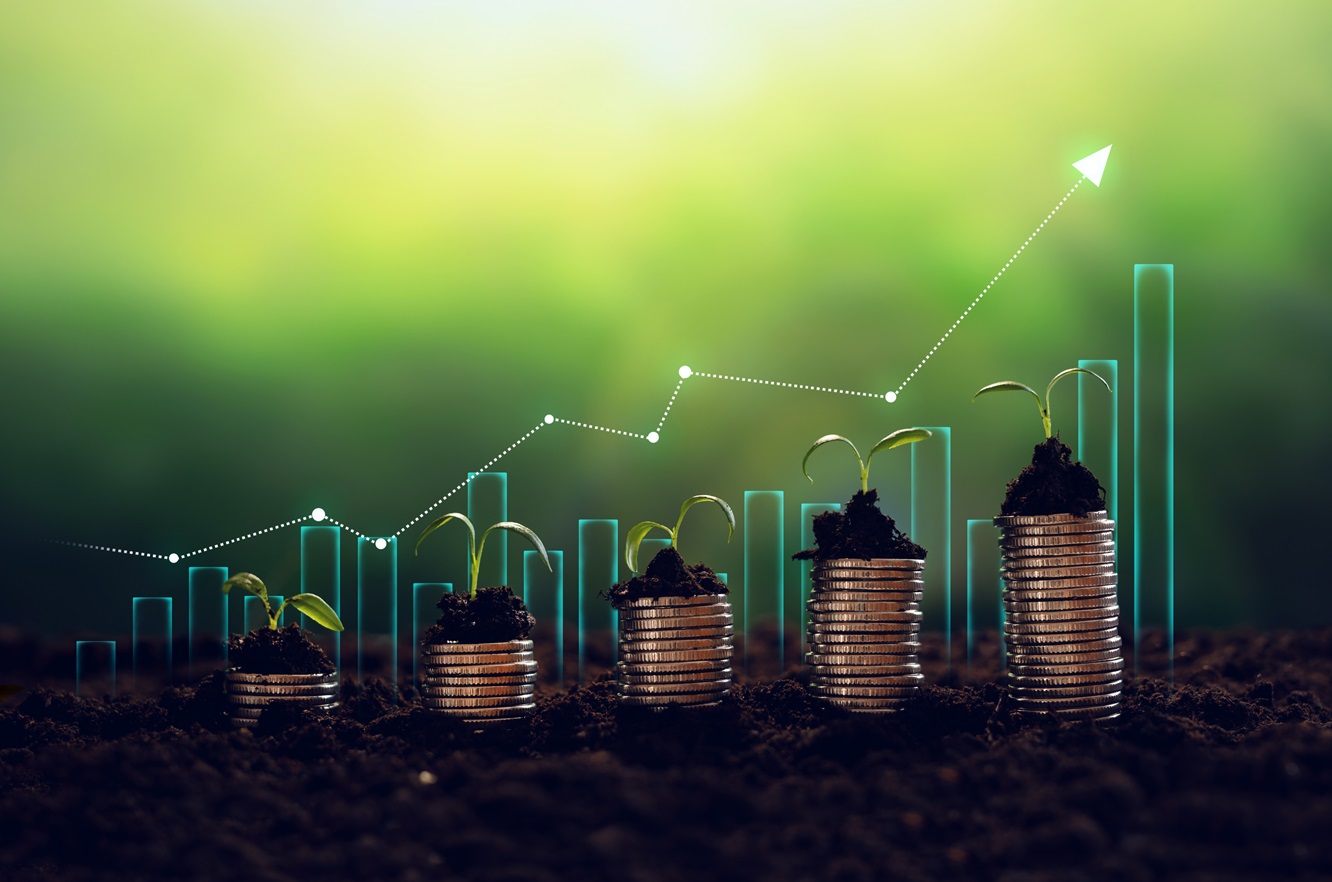Today’s world sees environmental concerns positioned at the forefront. With this focus, green investment has emerged as a way to align financial goals with sustainable practices. But what exactly is this investment? More than just a trend, green investing represents a commitment to supporting initiatives that not only generate returns but also contribute positively to the planet. And if you are interested in making a difference through green investment, understanding the ins and outs of the process is crucial.
In this blog, we’ll talk about the essentials of green investing, what it is and how it differs from greenwashing, and the advantages and disadvantages of green investment. You'll also discover key tips to pursue this sustainable practice.
What is Green Investment?
Green investment, also known as green investing, refers to the practice of putting money into projects, companies, or funds that are committed to sustainable and environmentally friendly practices. The primary goal of this investment is to support initiatives that contribute positively to the environment while generating financial returns. And unlike traditional investments, which may prioritize short-term profits, green investing aims for long-term environmental and social benefits.
Moreover, green investing often focuses on areas such as renewable energy, energy efficiency, waste management, water conservation, and sustainable agriculture.
Green Investing vs. Greenwashing
Although sustainable solutions like green investments are becoming popular due to growing awareness of environmental issues, not all of them are genuinely green and truly focused on eco-friendliness. Therefore, it's important to know how to distinguish between real green investing and greenwashing — the practice of companies pretending to be eco-friendly just to attract investors.
Here's a detailed comparison to help you differentiate genuine opportunities for green investing from merely greenwashing.
Green Investing
Real green investing involves allocating resources into products or companies that leave positive impacts on the environment. This approach focuses on sustainable practices and genuine environmental benefits. Key characteristics include:
• Transparency: Genuine green investments provide clear, detailed information about their environmental impact and sustainability practices. Investors can verify claims through third-party audits or certifications.
• Impact Measurement: They often have measurable environmental goals, such as reducing carbon emissions, conserving natural resources, or enhancing biodiversity. These investments track progress and report outcomes.
• Sustainable Business Practices: Companies or projects involved in real green investing integrate sustainability into their core operations. This includes using renewable energy, reducing waste, and employing eco-friendly materials.
• Long-Term Viability: Green investments also prioritize long-term environmental benefits rather than short-term gains. They contribute to sustainable development and support green innovation.
Greenwashing
Greenwashing, on the other hand, refers to misleading claims made by companies or investment products that exaggerate or fabricate their environmental credentials to attract eco-conscious investors. This deceptive practice can mislead investors and consumers, leading them to believe they are supporting sustainable initiatives when, in fact, they are not. To help you protect your investment from greenwashing , here are some characteristics of greenwashing to watch out for:
• Vague Claims: It often involves broad or ambiguous statements about sustainability without concrete evidence or clear metrics. Terms like “eco-friendly” or “natural” may be used without substantiation.
• Lack of Transparency: Companies engaging in greenwashing may avoid providing detailed information or fail to undergo third-party verification. They may also resist sharing data on environmental performance.
• Minimal Efforts: It might also involve minor or superficial changes that do not impact the environment. For example, a company might highlight a single green initiative while maintaining unsustainable overall practices.
• Focus on Marketing: Lastly, greenwashing is often driven by marketing strategies designed to appeal to environmentally conscious consumers rather than making substantive changes. The emphasis is on appearance rather than genuine impact.

Advantages of Green Investment
Aside from supporting sustainable practices, investing in green projects also comes with some benefits, which explain why many investors continue to invest in them. If you are also considering investing, below are some of the key advantages of green investment, showing why it's a smart choice for both your wallet and the world.
Environmental Impact
One of the most significant advantages of green investment is its positive impact on the environment. By supporting sustainable practices and technologies, investors can contribute to reducing greenhouse gas emissions, conserving natural resources, and protecting ecosystems. This, in turn, helps combat climate change and promotes a healthier planet for future generations.
Financial Performance
Contrary to the misconception that green investments yield lower returns, many sustainable investments have competitive financial performance compared to traditional investments. Additionally, the increasing demand for sustainable products and services can drive profitability.
Regulatory Support
Governments and regulatory bodies worldwide are increasingly implementing policies and incentives to promote sustainable practices. Meaning, green investors can benefit from tax credits, subsidies, and grants that support renewable energy projects, energy-efficient technologies, and other sustainable initiatives.
Market Demand
Currently consumer preferences are shifting toward environmentally friendly products and services. Companies that adopt sustainable practices can attract a growing customer base and enhance their brand reputation. This increased market demand can drive revenue growth and create new business opportunities for green investors.
Disadvantages of Green Investment
While green investments come with many benefits, they also have their challenges. Here’s a breakdown of the possible downsides to help you get a clear picture and make well-informed choices.
Higher Initial Costs
Green investments often require higher initial costs compared to traditional investments. Developing and implementing sustainable technologies and practices can be expensive, and the returns may take longer to materialize. Investors need to be prepared for potentially higher upfront expenses and a longer investment horizon.
Limited Investment Options
While this market is growing, it still represents a smaller portion of the overall investment landscape. Investors may find limited options and may need to conduct extensive research to identify suitable opportunities.
Market Volatility
Green investments, like any other investments, are subject to market volatility and economic fluctuations. Changes in government policies, technological advancements, and consumer preferences can impact the performance of these investments. Hence, investors need to be prepared for potential market risks and uncertainties.
Regulatory Changes
While regulatory support can benefit green investments, changes in government policies and regulations can also pose risks. Political and regulatory shifts can impact the profitability and viability of sustainable projects. Investors must stay informed about regulatory developments and be prepared to adapt to changes in the policy landscape.

Key Green Investment Tips
Achieving success in this field requires a robust strategy to effectively navigate the complexities of green investing while meeting both your financial and sustainability goals. In addition to having a strong strategy, here are five additional tips to help you maximize your green investments:
Conduct thorough research before investing.
Investigate the company’s environmental practices, sustainability goals, and financial performance. Look for third-party certifications and transparency in reporting. Understanding the company’s commitment to sustainability can help you make informed investment decisions.
Make sure to diversify your portfolio.
Diversification is a key strategy for managing risk in any investment portfolio. Spread your investments across different sectors, industries, and geographic regions. This can help mitigate the impact of market volatility and reduce the risk associated with individual investments. Consider a mix of renewable energy, energy efficiency, waste management, and sustainable agriculture investments.
Regularly monitor and evaluate the performance of your green investments.
Track key performance indicators related to environmental impact, financial returns, and social responsibility. Stay informed about industry trends, regulatory changes, and technological advancements. Adjust your investment strategy as needed to align with your goals and market conditions.
If needed, consider seeking professional advice first.
Financial advisors with expertise in sustainable investments can provide valuable insights and help you develop a tailored investment strategy. They can also assist in identifying reputable investment options and navigating the complexities of the green investment market.
Focus on long-term goals and sustainability objectives.
Be patient and focus on the long-term benefits of your investments. While short-term market fluctuations may occur, the long-term potential of green investments lies in their ability to drive positive environmental and social change.
Start Your Journey in Sustainable and Green Investing with CREIT!
Ready to make an impact with your investments? If so, then choose CREIT as your primary option for green investing and lead the charge toward a sustainable future. Explore how CREIT's innovative strategies and commitment to environmental responsibility can align with your financial goals.
Contact us now and invest in a greener tomorrow today!


